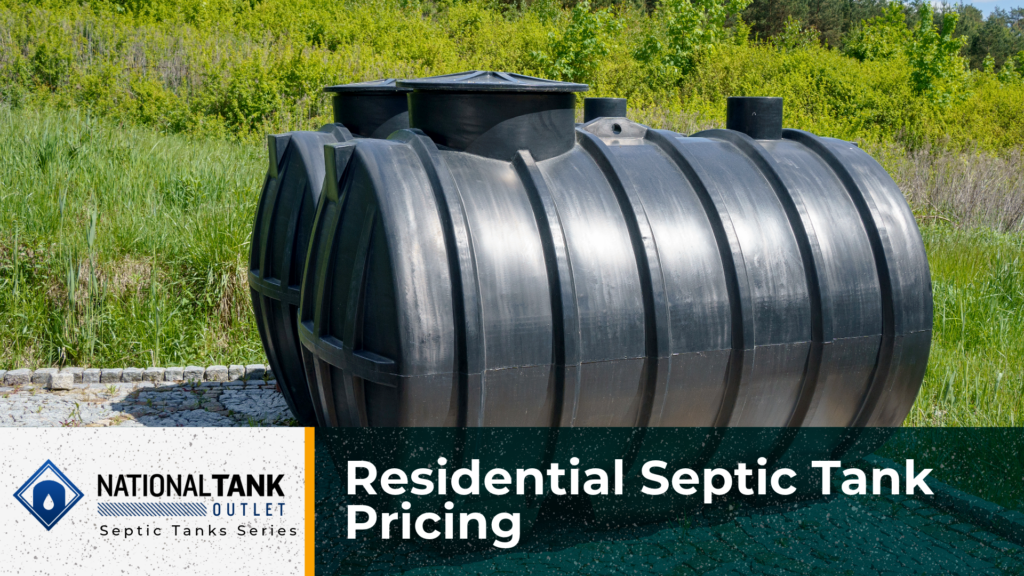
When planning a residential septic system, understanding the costs involved is a practical first step for homeowners. Residential septic tank pricing can vary widely based on points like tank type, materials, size, system type, and installation requirements. Whether you’re replacing an old system or installing one at a new property, knowing the price range and what drives these costs can help you budget effectively and avoid unexpected expenses.
This guide focuses on home septic tank pricing, offering detailed insights for homeowners. We’ll explore general cost estimates for a typical 3 bedroom home and the impact of site specific challenges like poor soil or difficult terrain that can increase septic system installation costs. Depending on the type of issue, the project may require extra work or specialized solutions, which often come with higher installation fees.
This guide is designed to explore septic tank pricing in detail. We’ll look at different tank materials like concrete and polyethylene, essential components like drainage fields and filters, and how each option impacts the cost. By the end of this guide, you’ll have a clear understanding of what drives septic tank prices and how to choose the option that best fits your needs and budget.
Equipment Cost Factors for Septic Tanks
Septic tank pricing largely hinges on the materials used, as each type of tank brings its own set of costs, benefits, and considerations. Below, we break down the main materials — concrete, steel, polyethylene, and fiberglass — and explore how each affects pricing.
Concrete Septic Tanks
Concrete septic tanks are one of the most common choices for homeowners due to their durability and long lifespan. A standard 1,000 gallon concrete tank typically costs between $500 and $900. However, several factors can impact the final price:
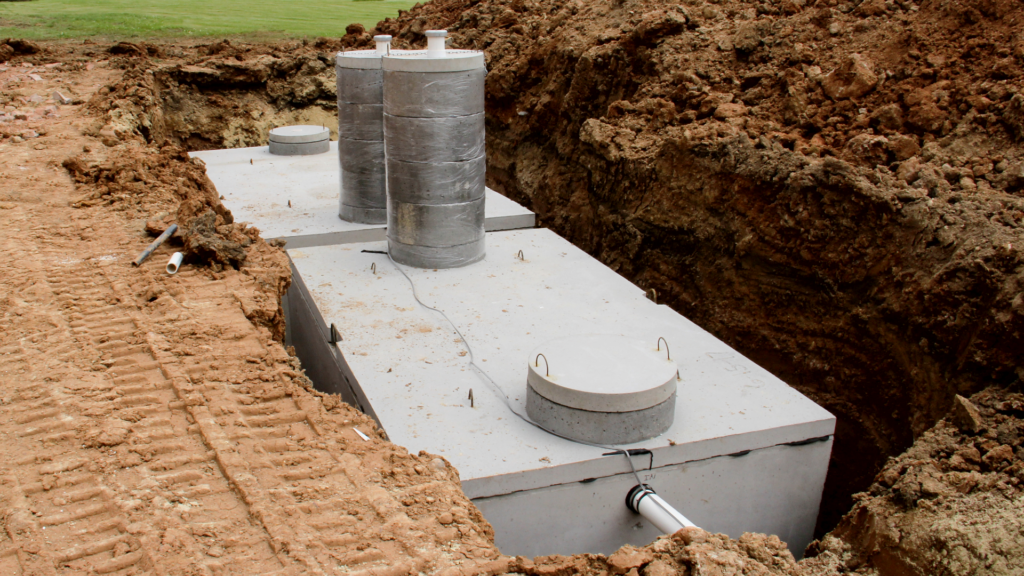
- Capacity Upgrades: For every additional 100 gallons of storage, expect to pay an extra $50 to $150.
- Transportation Costs: Due to the significant weight of concrete tanks, the distance from the selling yard or plant can add to the overall expense. This is especially true if a site is far from the supply source or in a remote area.
- Style Variations: Concrete tanks are available in multiple styles, such as single compartment, dual compartment, or low profile designs. The cost will vary depending on the style that best matches the site’s requirements and the homeowner’s needs.
Despite the higher weight and transport considerations, concrete tanks are valued for their strength and reliability, making them a solid choice when long term use is a priority.
Steel Septic Tanks
Steel septic tanks are no longer a common choice due to their significant disadvantages. While they may be initially cost effective — sometimes offering the lowest price for smaller models like 500 gallon tanks — they have fallen out of favor due to their tendency to rust and break down over time. For this reason, steel tanks are typically avoided except in very specific scenarios or for temporary use.
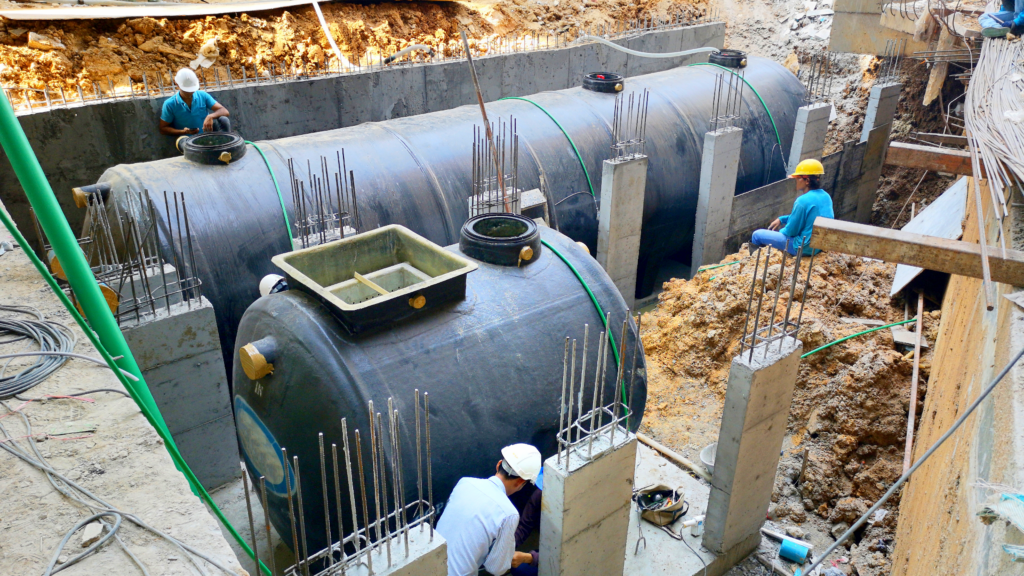
Steel’s primary drawback is its lack of durability, but for those on a tight budget or in need of a short term solution, a small steel tank might still be an option. However, it’s important to weigh this against the long term maintenance or replacement costs.
Polyethylene Septic Tanks
Polyethylene tanks have become a popular choice in recent years as a lightweight yet durable alternative to concrete. A standard 1,000 gallon polyethylene septic tank is typically priced between $900 and $1,000. Pricing increases with larger capacity tanks, making size one of the key cost factors.
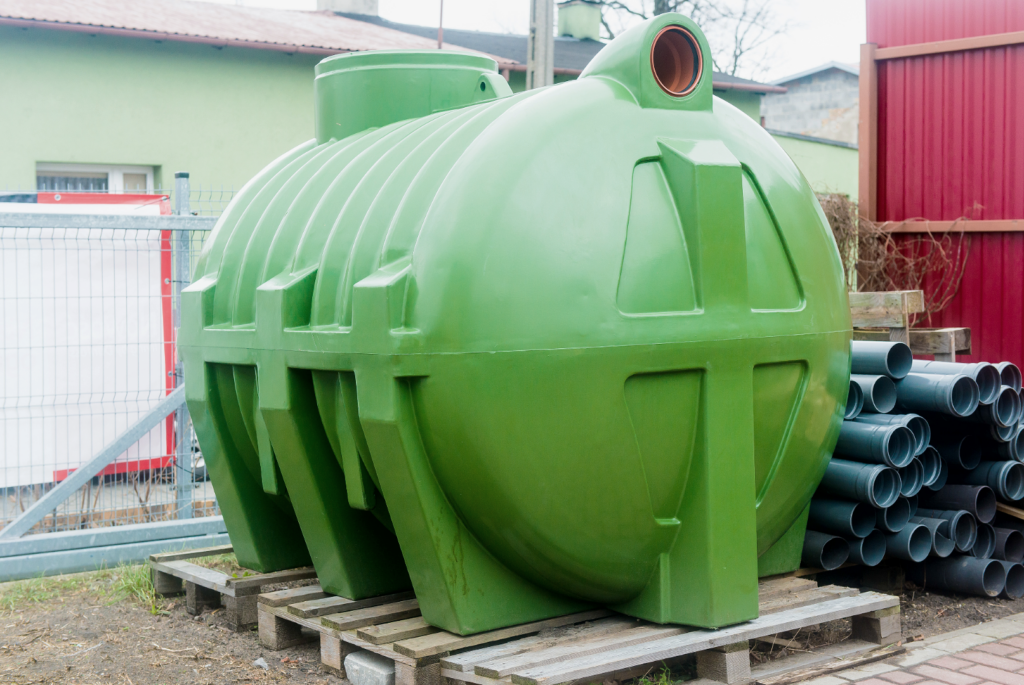
Polyethylene tanks are also available in different styles, such as ribbed, low profile, one compartment, two compartment, and spherical pump tank designs. Prices can vary depending on the specific features required for your system.
Compared to concrete, poly septic tanks are easier to transport and move into place for installation, as their lighter weight reduces handling challenges. Plastic septic tanks are also highly resistant to cracking and corrosion from sewage gasses and underground soil conditions, which has contributed to their growing use, appeal, and trust.
Fiberglass Septic Tanks
Fiberglass septic tanks are less traditional but offer unique benefits, especially for locations with challenging soil conditions. A 1,000 gallon fiberglass tank has typical costs starting around $1,500, making it one of the more expensive options on the market.
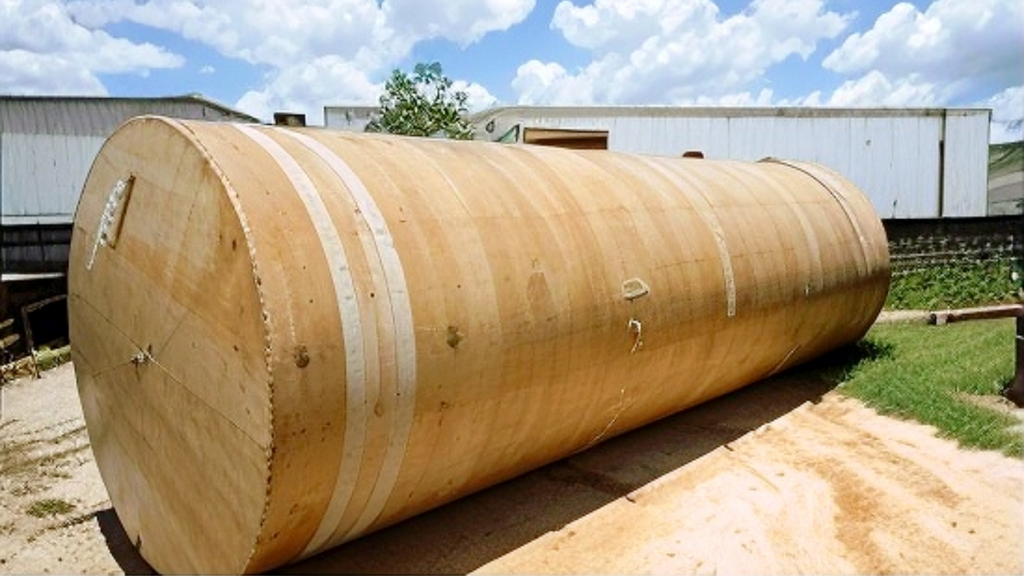
Although pricier, fiberglass septic tanks have advantages that may justify the additional cost. They are lightweight like polyethylene tanks, but their rigid, reinforced structure often makes them a better fit for areas with high ground pressure or fluctuating soil conditions. While not as widely used as concrete or polyethylene, they are a viable option for homeowners seeking a tank that combines durability and adaptability.
Drainage Field Cost Factors
The drainage field, also referred to as the leach field or effluent field, is one of the most critical and costly parts of a septic system. This part of the system is responsible for dispersing wastewater from the septic tank into the surrounding soil for natural filtration and absorption in a gravity fed, conventional septic system. Two primary materials are commonly used to build drainage fields — gravel drain rock and vaults.
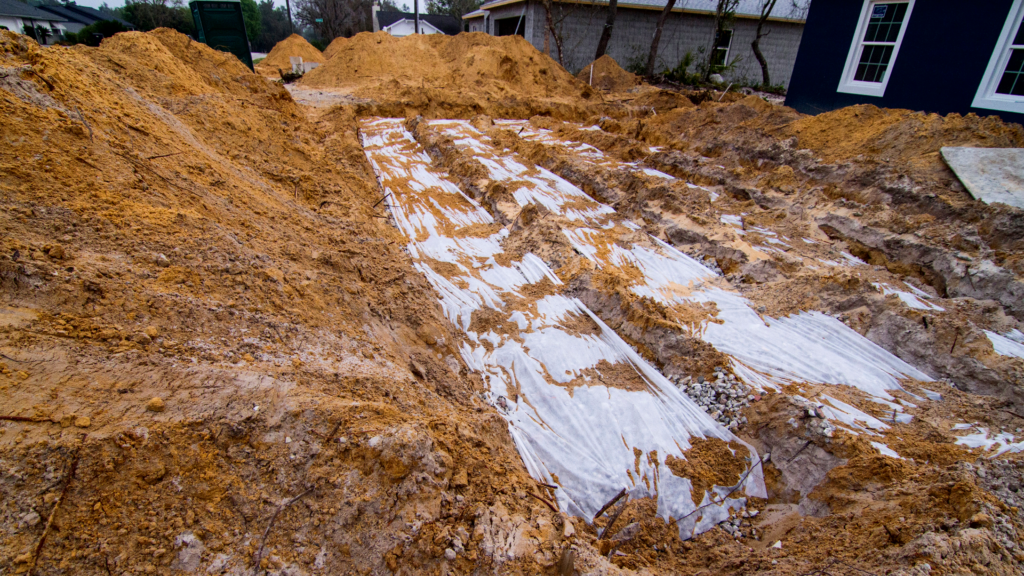
Below, we’ll explore their individual costs and the factors that affect pricing.
Gravel Drain Rock
The use of gravel drain rock is a standard and cost effective solution for building drainage fields. Gravel costs typically range from $12 to $30 per ton, with the final price heavily influenced by the transport distance from the supply pit to the installation site.
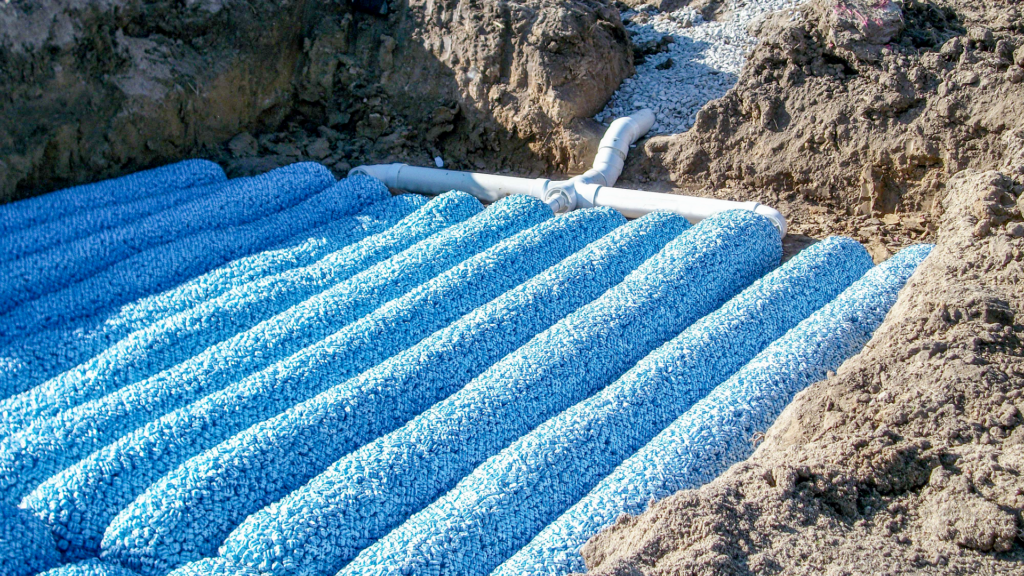
- Material Needs: The amount of gravel required depends directly on the size of the drainage field, which is determined by the size of your septic system. For example, the drainage field of an average 3 bedroom home may span roughly 4,500 square feet. However, larger septic systems designed for heavy use may require drainage fields as large as 12,000 square feet.
- Field Size Variability: A larger drainage field requires significantly more gravel, adding to the total expense. Although gravel drain rock is generally cost friendly, buyers should keep in mind the added cost of delivery, especially for rural or remote locations.
Vaults
Vaults (or leaching chambers) are another option for constructing drainage fields, offering a modern alternative to gravel based systems. They are sometimes known as a gravel-less solution; however, there are times when gravel will be needed even in a chamber setup. Vaults are prefabricated units designed to handle wastewater flow from the septic tank for environmental release and treatment. The cost of vaults typically ranges from $25 to $40 per unit, or $60 to $80 each if excavator installation is required.
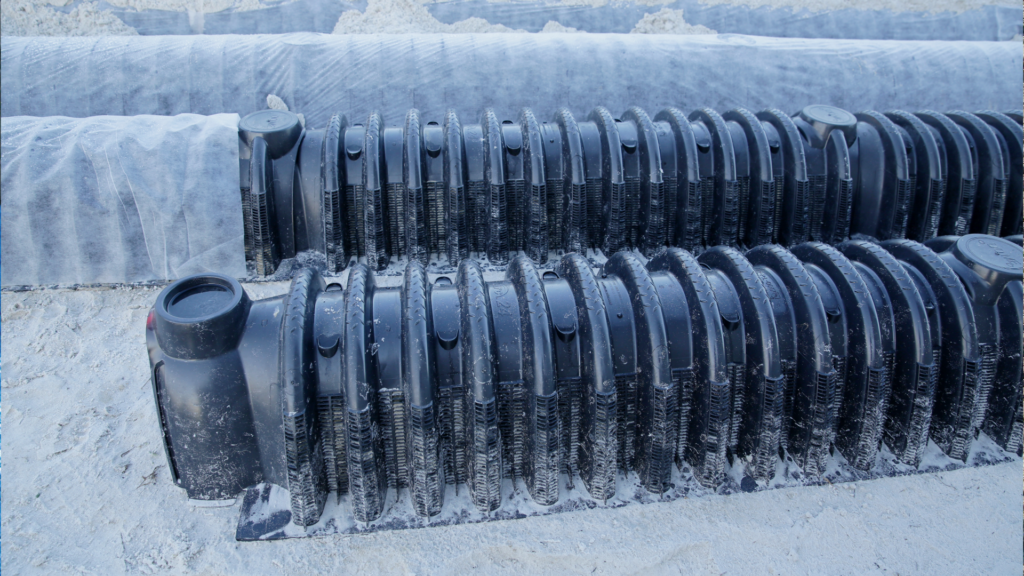
- Field Size Reduction: Even though vaults generally result in a smaller drainage field compared to gravel systems, the overall cost can still be higher. The smaller field size means less land is required, but the installation and per-unit costs often offset these savings.
- System Sizing: The size of a leaching chamber system depends on two main points — wastewater flow and soil properties. For a 3 bedroom home, the drain field may range from just 200 square feet in coarse, sandy soil to as much as 2,000 square feet in fine textured soil.
- Number of Vaults Required: For example, a typical 3 bedroom home with coarse, sand like soil may need approximately 14 six foot vaults or 22 four foot vaults. These numbers will vary based on soil type and the leach field’s total square footage. The total cost for these vaults can range between $350 and $1,800, depending on the installation complexity and whether the work is done professionally or as a DIY project.
Key Cost Considerations
Vault systems come with more upfront material and installation fees, but their reduced field size and space saving advantages make them a preferred option in specific cases. Homeowners should consider the soil texture, expected wastewater volume, and site layout to determine whether vaults or gravel drain rock offer the best balance of cost efficiency and function.
Septic tank installation professionals, site evaluators, or site engineers – all often involved in planning or installation – can help homeowners determine which drain field option is best.
Pipe Costs for Septic Systems
Pipes are another essential part of every septic system as they transfer wastewater from the house to the tank and from the tank to the drainage field. Typically, PVC pipe and DWV PVC fittings are the standard choice for septic systems due to their durability, affordability, and corrosion resistance. The cost of PVC piping for a septic system generally ranges from $100 to $200. However, a few key factors can affect the total amount spent on pipes.
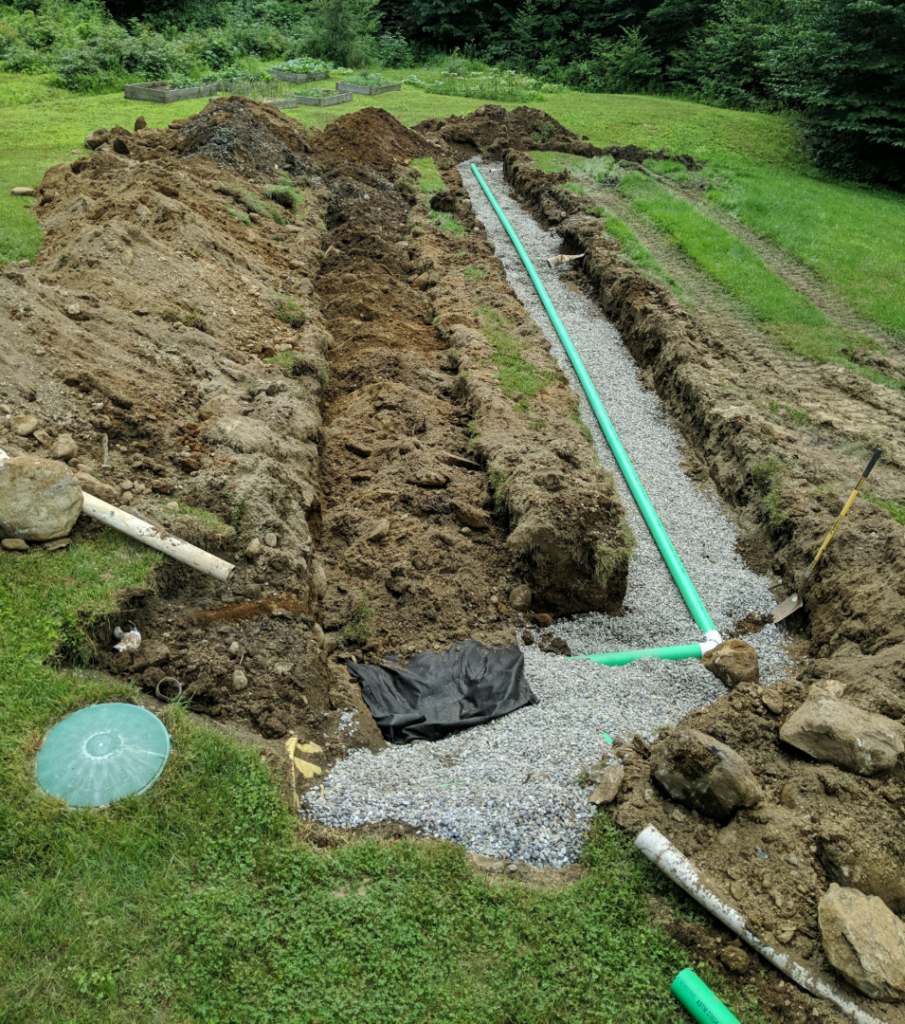
- Distance from Structures: Building regulations and plumbing codes often require septic systems to be installed a minimum distance away from houses, wells, and other structures to ensure safety and environmental protection. The further the system needs to be placed, the more piping will be required, which can increase costs.
- Length of Drainage Field: The size and layout of the drainage field are also significant. A longer or more complex drain field will require more pipes, which directly adds to the overall expense. For example, a system with a larger field intended for a high capacity tank or one in a uniquely shaped site may need more pipe than a standard setup.
While piping is often not the most expensive part of a septic system, it’s important not to overlook this cost during project planning. By considering all influencing factors, homeowners can budget effectively and make sure their system is built to meet regulations and functional needs.
Filter Costs for Septic Systems
Filters are an important part of septic systems that are used to keep solid waste from entering the drain field where it could cause clogs, poor efficiency, or backups. Effluent filter costs vary depending on the type of septic system as different setups may require specific filtration options.
For example, a high quality filter for traditional gravity fed septic systems typically costs between $200 and $300. These filters are known for their effectiveness and reliability in keeping the system working by preventing clogs and extending the life of the drainage field.
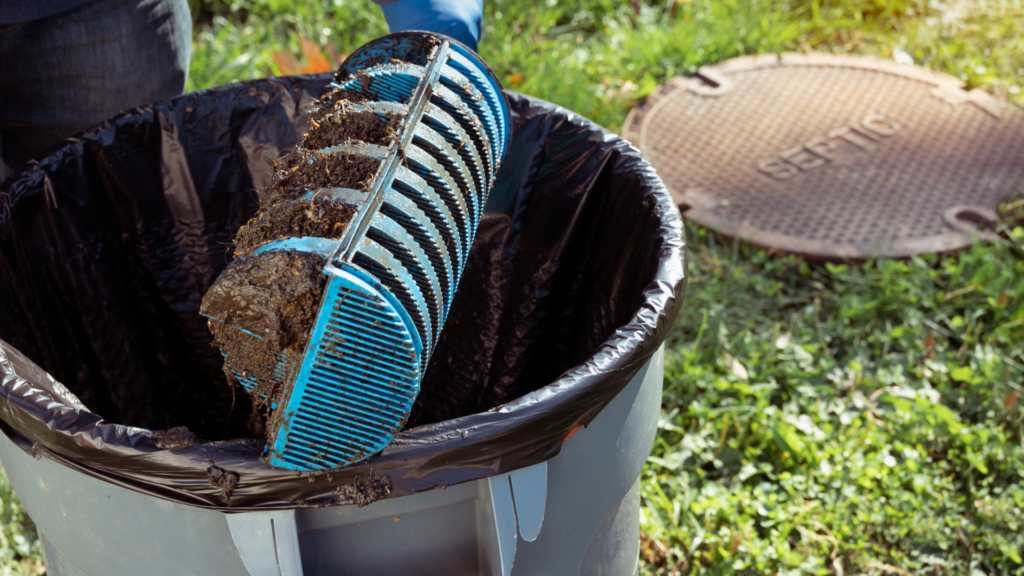
When budgeting for a septic system, it’s important to factor in the filter as a recurring expense as it may need to be eventually replaced. Different state regulations and requirements may have different needs and may require specific effluent filters that align with the system type, the site’s soil conditions, and wastewater volume.
Maintenance and Access Riser Costs
Manhole extensions and access risers are optional, but highly valuable additions to septic tank setups. The add-ons make it significantly easier to inspect, maintain, and pump the tank without having to dig or excavate. These risers allow convenient ground level access to the tank, which will save time and effort during routine maintenance or repairs.
The cost of a riser typically ranges from $100 to $300, depending on the material used. Concrete risers tend to fall on the lower end of the price spectrum due to their simple construction and affordability. However, they can be heavy to install and may be damaged over time if not properly sealed.
On the other hand, polyethylene manhole risers are lighter and more resistant to wear, making them a popular choice for modern systems. Their durability and ease of handling often make them worth the higher initial cost, especially for homeowners looking to minimize and streamline long term maintenance and pumping.
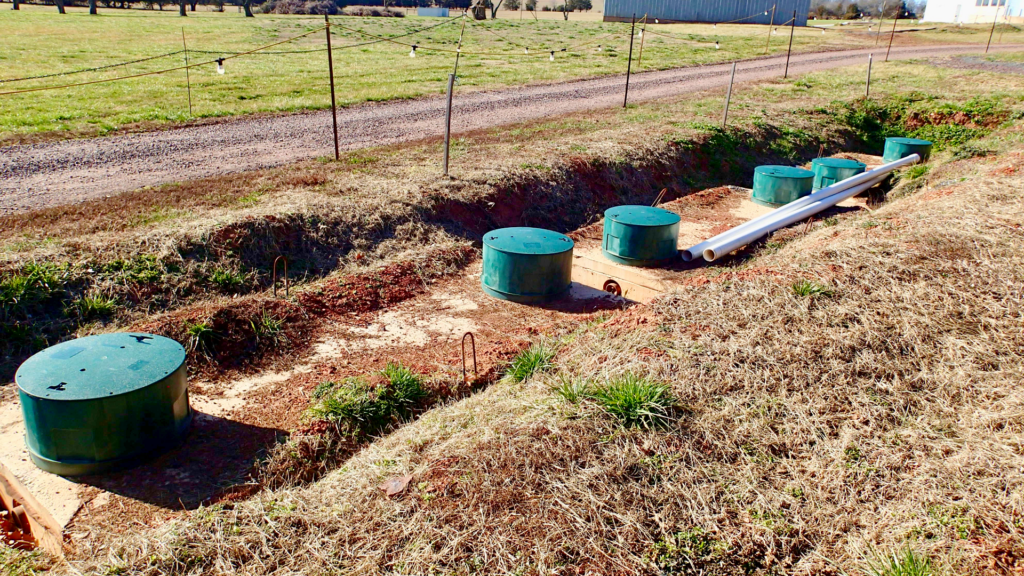
Choosing the right riser for your septic system involves balancing durability, cost, and ease of installation. While risers might seem like a small component of the overall system, they play a big role in maintaining accessibility and reducing future labor expenses. Often the type of manway extension is chosen to match the septic tank material type.
Installation Cost Factors for Septic Systems
Understanding installation costs is a key step in planning your septic system. These costs can vary widely based on the soil, site conditions, and regulatory requirements of your property often set by your state or local government. Below, we break down three major factors that influence installation expenses.
1. Soil Evaluation
Before installing a septic system, the soil on your property must be thoroughly evaluated to ensure it can support wastewater drainage and what type of system is needed. This process is typically conducted by a licensed soil scientist, who will examine the soil’s texture, structure, and drainage properties.
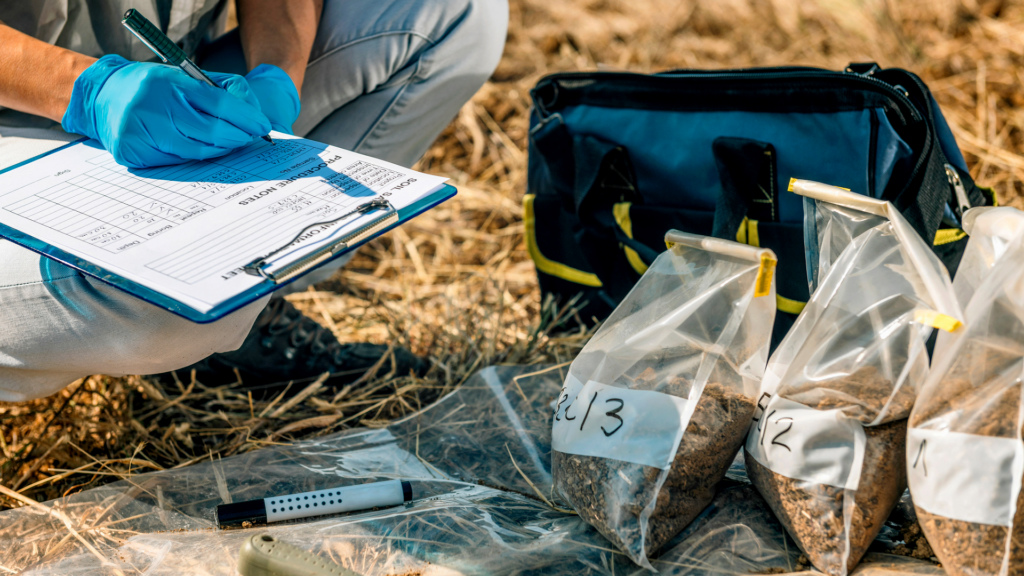
The cost of a soil evaluation can range between $100 and $400 depending on the location and scope of the analysis. This step is important and often mandated, as it determines the system type and setup your property can accommodate. Skipping this evaluation is typically not allowed, and even if it could, would likely lead to costly issues later if the soil proves unsuitable for a septic system. For additional guidance, local health departments often provide resources that detail soil evaluation standards or the necessary steps for septic system installation.
2. Site Evaluation
A site evaluation takes soil testing a step further by looking at the overall conditions of your property to determine the best place for the septic tank. Historically, percolation (or “perc”) tests were common, measuring how well soil absorbs water. However, these have largely been replaced by more comprehensive site evaluations that involve digging with a backhoe. This method examines soil layers and site characteristics in greater detail.
The cost of a site evaluation averages between $0 and $300. Sometimes, companies that perform this service may waive the fee if you choose them for system installation. These assessments not only outline system placement but also help identify potential challenges early. Learn more about site testing methods and regulations on your state’s governing department website.
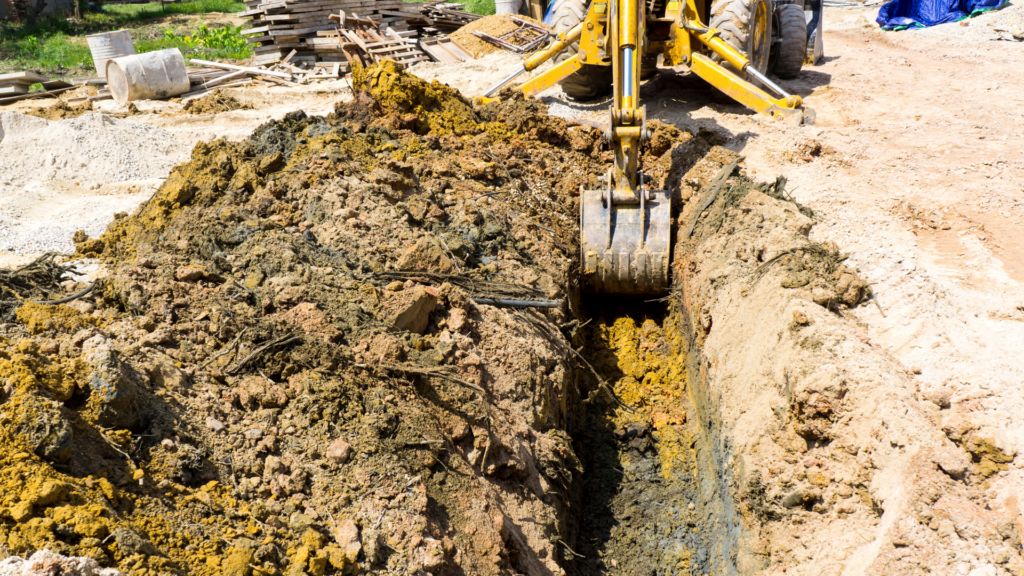
3. System Design
Septic system design is an essential step in the installation process and often requires the expertise of a design professional or septic system engineer. For straightforward sites, hiring a design professional is a cost effective option with prices generally ranging from $450 to $900 for a standard three bedroom home. However, design costs can increase based on your property’s unique features, such as the size of the tank and system, topography, and soil characteristics.
On more complex properties, local health departments or county regulations may require a civil engineer to design the system. Engineering fees range from $700 to $2,000, especially for lots with challenging conditions like steep slopes or poorly draining soil. While this can be a significant cost, a properly designed system will ensure safe and effective wastewater management for your property. For more information on septic systems and design, visit the National Environmental Services Center.
4. Permitting
Before installation can begin, the necessary permits must be secured. These permits are put in place to make sure the system meets local health and safety standards. Sometimes, the designer or contractor managing the project takes care of the permitting process and other times the property owner will be responsible for the permits.

The cost for permits can range from $250 to $1,000. However, this amount can increase significantly depending on the state you’re in, the complexity of your project, and additional governmental fees. For example, projects in areas with strict environmental regulations or detailed zoning requirements may have higher permitting expenses. Checking with your local health department or municipality is often the best way to get detailed information on permits and fees.
5. Septic Tank Installation
Installing the septic tank itself is another major expense. Prices range from $1,000 to $12,000, depending on labor, the type of system being installed, and site complexity. It’s important to note that this cost doesn’t include the tank itself; it focuses solely on installation services and related labor.
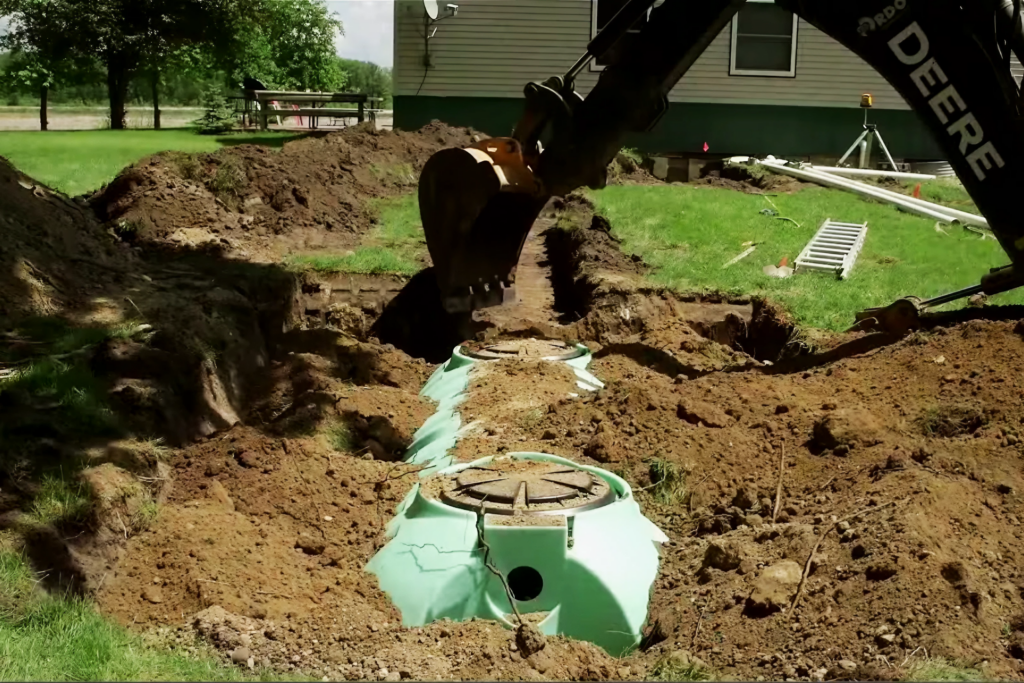
In most cases, installing a conventional gravity fed system might fall toward the lower end of the price range as they are the most common and simplistic type. Systems that require advanced components, like pumps or alternative designs, will often push the price upward. Different types of tanks, such as concrete or fiberglass, also affect installation costs as the material changes factors like preparation and equipment requirements.
6. Drainage Field Installation
The drainage, or leach, field installation is another key part of the overall cost, generally ranging from $1,000 to $5,000. Prices in this range are impacted by variables such as the size of the drainage field, the type of system design (gravel drain rock or leaching vaults), and site specific details like soil type, lay of the land, or nearby groundwater levels.
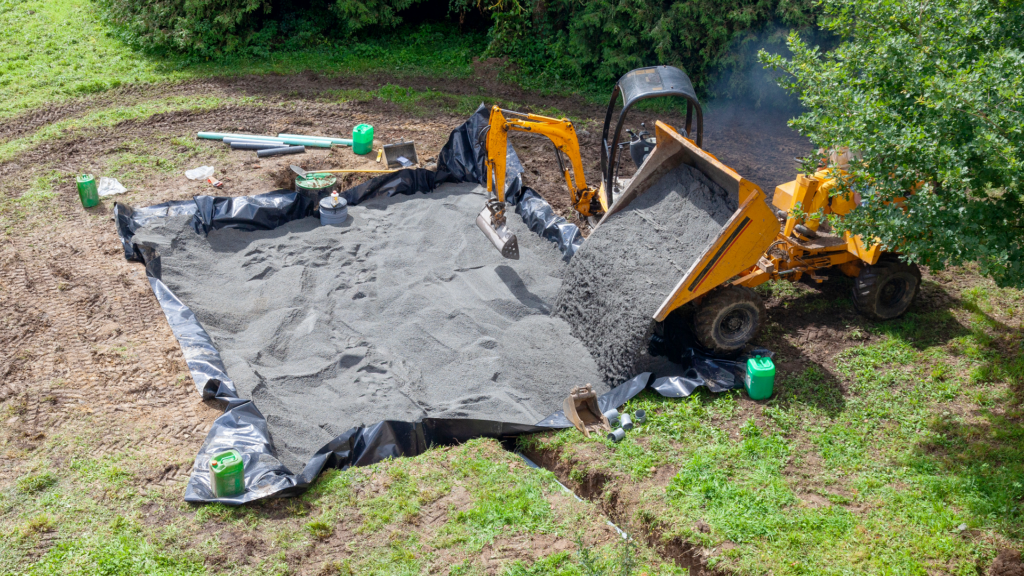
For example, soil type plays a substantial role in costs because it directly affects the field size. Soil classified as USDA Soil Class #1, which absorbs water quickly, requires a smaller drainage field, whereas Soil Class #6 may need a field six times larger to handle the same volume of wastewater. Learn more about soil classifications and testing through the USDA Soil Survey. Properties with poor drainage or uneven terrain may also have higher installation costs due to additional preparation work.
7. Location
Lastly, the location of the install site can greatly impact the system’s overall cost. Pricing varies depending on whether the system is being installed in a rural area, a developed suburban town, or more difficult environments like woodlands, mountainous areas, or deserts.
How accessible the site is another factor that affects costs. For example, if the installation site is located on steep, hilly terrain or in a remote area that’s difficult to access with heavy equipment, contractors may charge extra for the added challenges. Even in flat areas, working on tightly packed urban lots also poses unique challenges compared to open rural acreage.
By considering the above points, homeowners can better understand the different parts that can drive septic system installation costs and plan their budgets accordingly. Proper research and consultation with professionals can help identify opportunities to save money while ensuring a durable and efficient system.
Septic System Cost Factors
Calculating total septic system price will also depend on the type of system you require, the complexity of installation, and ongoing maintenance requirements. Here’s a breakdown of six septic system types and the costs associated with each.
1. Conventional Gravity-Fed Systems
The most common and lowest cost option is the conventional gravity fed septic system. These systems rely on the natural height difference between the home and the tank to use gravity to move wastewater from the home to the septic tank and, eventually, the drainage field.
Costs for a gravity fed system typically range from $2,500 to $6,000. However, prices can rise up to $12,000 due to factors like state regulations, property location, and the company handling the installation. Additionally, project details such as soil type, lot size, and complexity play a role in determining the final cost. Gravity fed systems are highly sought after for their simplicity and affordability, making them a practical choice for many homeowners.
2. Pressure Systems
Pressure fed septic systems are an excellent option for properties where gravity fed systems cannot be used due to insufficient slope or challenging terrain. These systems use a pump or pressurized components to move wastewater from the septic tank to the drainage field.
The cost of a pressure system typically falls between $3,000 and $10,000, with this range reflecting the average expense of installing one for a simple three bedroom home. More complex systems or larger households may push prices to the upper end or higher. Pressure systems provide reliable wastewater management in less-than-ideal site conditions but require electricity and more maintenance than gravity fed systems.
3. Aerobic Systems
For properties that require advanced wastewater treatment, aerobic systems offer a sophisticated yet costlier solution. These systems introduce air into the wastewater treatment process to create an aerobic environment that drives faster decomposition of sewage. They also include components such as electrical systems, air compressors, and ventilation lines that add to their cost and complexity.
Aerobic systems generally cost between $10,000 and $20,000, making them one of the more expensive options. Their higher price is due to the advanced engineering required to create and maintain aerobic conditions, having more working parts, and their work intensive installation. Ongoing operation costs are also higher compared to gravity fed and pressure systems, as their setup needs electricity as well as regular inspections and upkeep.
While aerobic systems are more expensive upfront and over time, their efficiency and capability to handle challenging site conditions make them ideal for certain properties. For homeowners willing to invest in this advanced solution, they offer reliability and superior wastewater treatment, often in a much more compact design.
4. Mound Systems
Mound septic systems are a top choice for properties with high water tables, shallow soils, or poor drainage. These systems elevate the drainage field above the natural surface using an artificial sand and gravel mound to allow proper treatment of wastewater.
The cost of a mound system typically falls between $12,000 and $20,000. Prices range widely depending on the property’s topography, as these systems are highly sensitive to the landscape. For example, a flatter, easier-to-access site may keep the price at the lower end, while steep or uneven terrain can greatly increase labor and material costs. The overall sensitivity of mound systems to site conditions makes them a costly, but necessary, solution for challenging lots.
5. Recirculating Sand or Gravel Filter Systems
Recirculating sand or gravel filter systems treat wastewater by passing it through a bed of sand or gravel before dispersal. These systems are ideal for properties where traditional systems are not viable due to soil or groundwater issues and where simple mound systems can’t be used, but they often come with added expenses.
Costs for these systems range from $11,000 to $18,000. A common cost driver is the requirement to pair the system with an artificial mound for septic effluent, which will add to the overall expense. Additionally, since these systems are less common, installation may come with a higher price tag due to limited local expertise or available equipment. While less popular in some areas, recirculating systems offer robust treatment for properties that face complex wastewater challenges.
6. Bottomless Sand Filter Systems
Bottomless sand filter systems are an efficient alternative for properties with specific soil or drainage issues. Unlike traditional systems, they do not have a lined bottom, allowing treated effluent to seep directly into the ground.
The cost of bottomless sand filter systems generally ranges from $7,500 to $11,000. However, if the site presents difficult conditions, such as frozen ground, excessive rocks or boulders, or deep hardpan soil, additional labor and equipment costs can add $1,000 to $2,000 — or more — to the final price. These systems are particularly favored in areas where the soil is somewhat conducive to wastewater dispersal but needs an extra layer for depth.
Ongoing Maintenance for Septic Systems
Proper maintenance is essential to keep your septic system running smoothly and to avoid costly repairs. By sticking to a regular maintenance schedule and promptly addressing any issues, homeowners can extend the lifespan of their septic systems and ensure they keep working efficiently. Here’s a breakdown of key maintenance tasks, their costs, and factors that can influence these expenses.
1. General Maintenance
One of the most common needs in septic system care is regular pumping of the tank to remove accumulated sludge, also known as septage. On average, this should be done every 2 to 5 years and will depend on the size of the tank and household water usage.
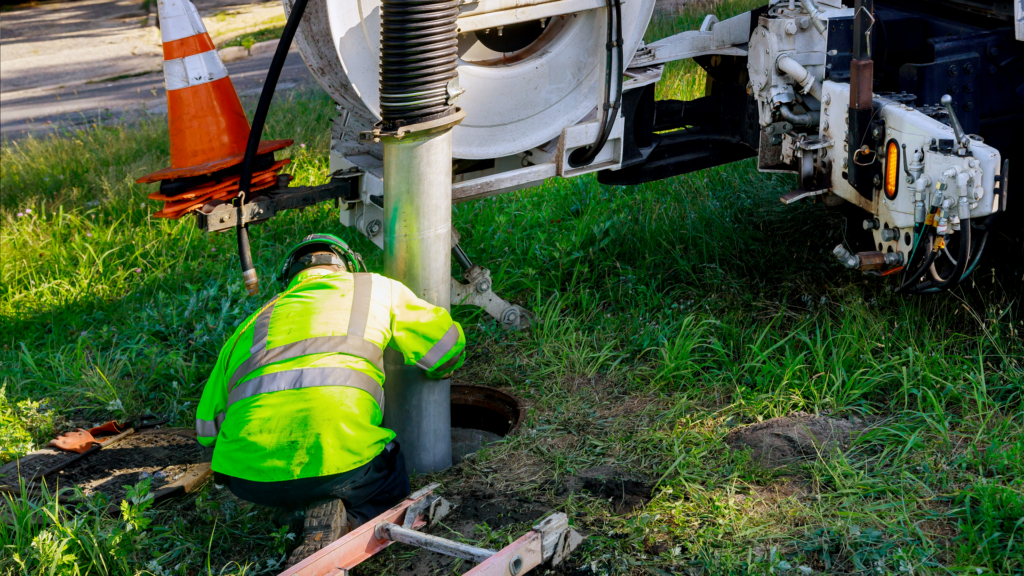
The cost of pumping usually falls between $200 and $500. Details that can influence this price range include the location of the septic system (how far the company has to travel), the amount of sludge that needs to be removed, whether the task can be completed in a single trip, and if the septic tank includes manway risers or if the tank lid will have to be excavated. For example, remote properties or those with larger tanks may have higher costs due to increased travel and labor.
Routine inspections are another important maintenance step. These inspections, often performed at the same time as pumping, check and clean the effluent filter as needed to ensure proper function and fluid flow. More intensive inspections can evaluate both the tank and the drainage field for potential issues. Technicians generally check for problems such as overly aggressive root growth around pipes, damaged or crushed piping, and blockages caused by untreated sludge. Left unresolved, these issues can lead to expensive repairs.
Follow these EPA maintenance tips to keep your septic system running efficiently.
2. Uncovering the Tank
For systems without underground tank risers installed, maintaining access to your septic tank becomes a task. Before pumping or other maintenance can be conducted, the tank must be uncovered. This process involves locating and digging down to the tank lid, which increases labor and can add extra costs to routine services, especially if the tank’s location is unknown.
The price for uncovering a tank usually ranges from $50 to $250. The exact cost depends on the soil conditions, the tank’s depth, and the time required to locate it. Installing access risers initially or during your next maintenance can eliminate this additional fee in the future, making it a cost saving upgrade in the long run.
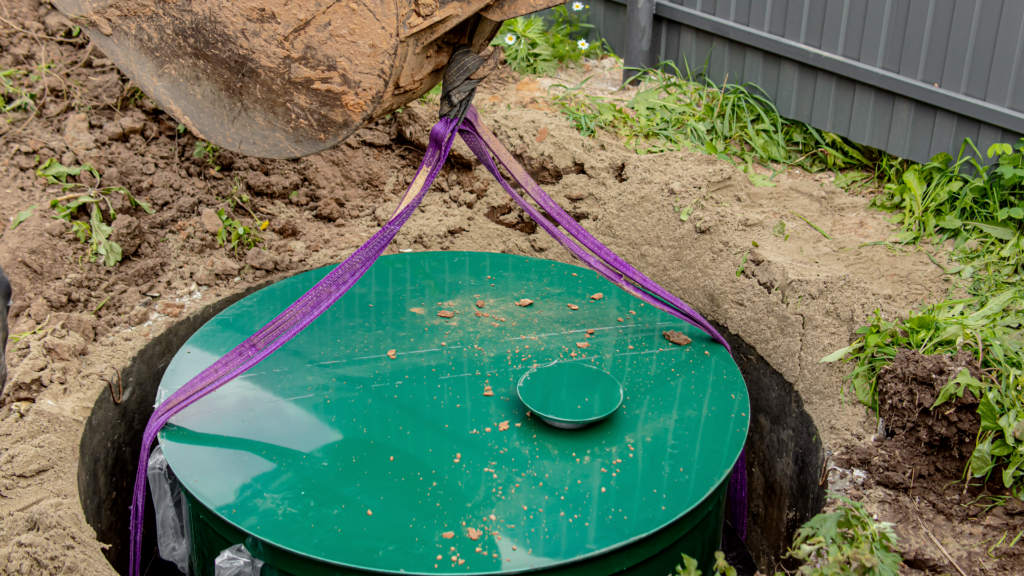
By staying on top of regular pumping, timely inspections, and providing accessibility, homeowners can avoid expensive repairs and make sure their septic systems remain reliable for years to come. Proactive care doesn’t just save money — it saves you from the stress of unexpected system failures. When in doubt, professional advice from trusted service providers can help you create a maintenance plan to suit your property’s unique needs.
Takeaway
Installing a septic tank is a significant investment, but understanding the costs and key factors involved can help you make better, more informed decisions. From site evaluations and system design to the actual installation and regular maintenance, each step plays a role in ensuring your system performs reliably and has an associated cost.
We’ve covered price ranges for the most common system types — like gravity fed systems starting at $2,500, aerobic systems ranging up to $20,000, and specialized options like mound systems and bottomless sand filters. We’ve also explored the importance of ongoing maintenance, like pumping (typically $200-$500) and inspections, to prevent costly repairs and extend the working life of your system.
Navigating the process can be complex, but expert guidance can help you find the best solution for your property. Don’t hesitate to talk with experienced professionals to plan your system and ensure compliance with local regulations. Whether you’re installing a new septic system or maintaining an existing one, being proactive is key to safeguarding this vital part of your home.
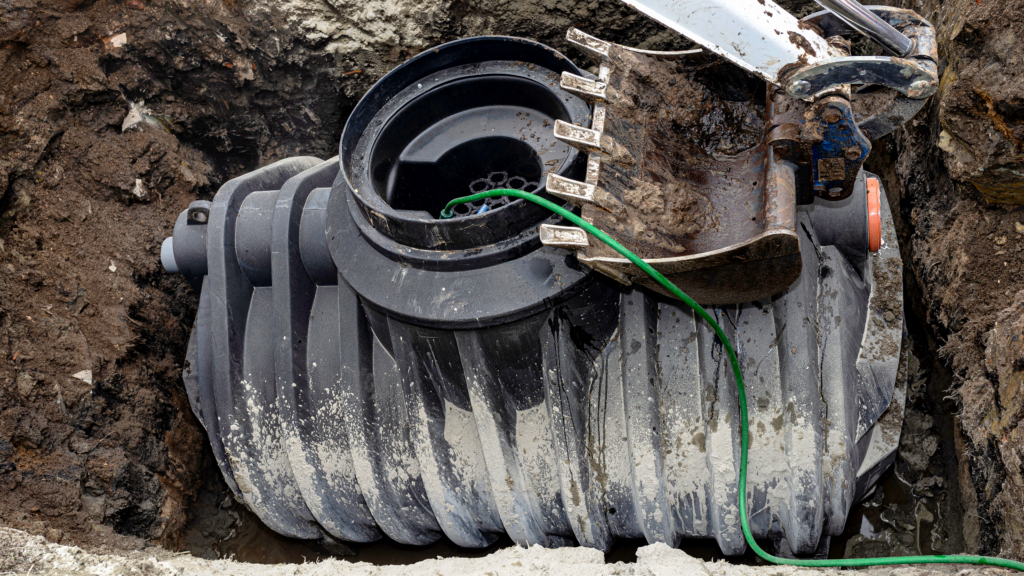
For more insights, detailed guides, and helpful resources, explore our blog or reach out today. As a trusted supplier of polyethylene septic tanks shipped nationwide, you can view our comprehensive selection of septic tanks here. The National Tank Outlet offers poly septic tanks in a full range of capacities, styles, and options to meet the needs of different septic systems and state regulations – browse our septic tanks by state.
Note: All pricing information within this article is provided for informational purposes only and are approximate and/or estimated values based on current, available market data. Prices presented herein are not provided as a guarantee of personal results as costs vary by location, supplier, contractor, and economic factors, but are offered in good faith as a helpful estimation of potential expenses.